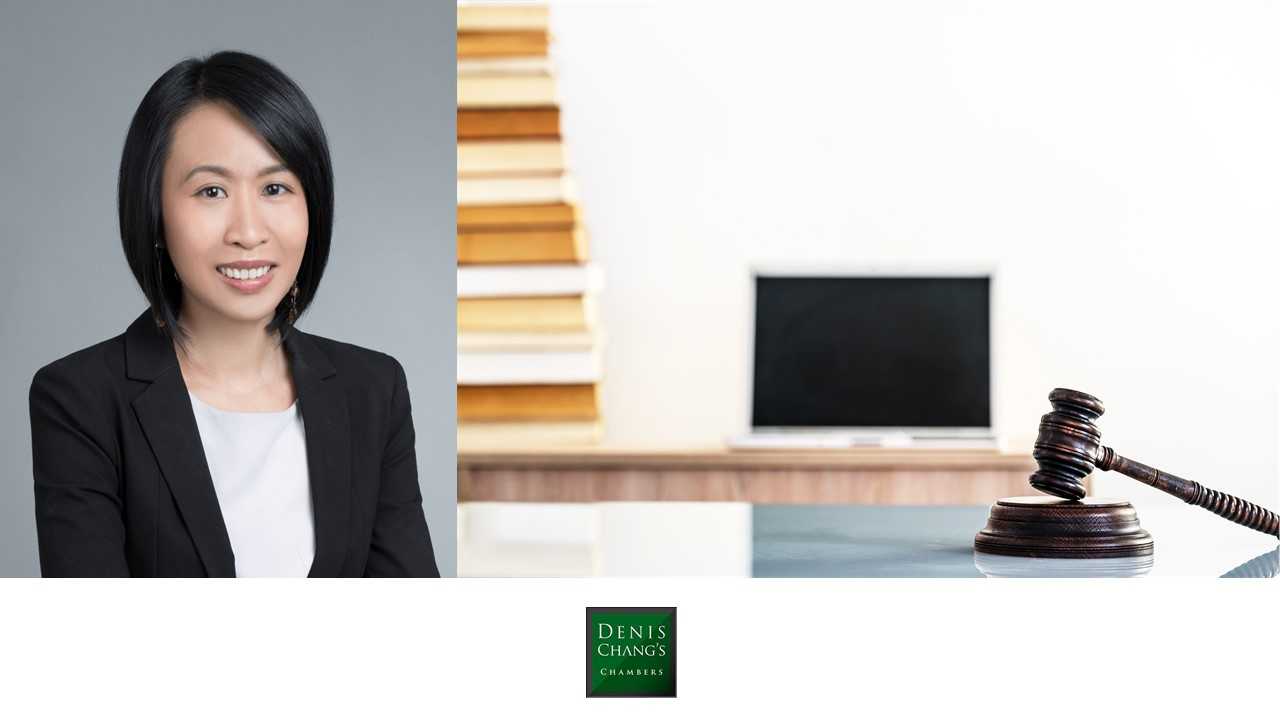
REMOTE HEARINGS – Six practical tips for conducting remote hearings
With the coronavirus showing no signs of abating, legal practitioners have had to adapt to the increasing occurrence of virtual court hearings and the associated technical challenges. Tara Liao shares her experience and tips for avoiding last-minute hiccups when conducting VCF hearings.

The Chief Judge of High Court issued the Guidance Note for Remote Hearings for Civil Business in the High Court on 2 April 2020. Shortly after that, the Court of Appeal gave authoritative guidance in CSFK v. HWH [2020] HKCA 207, signifying a more open attitude towards the use of video conferencing facilities (“VCF“) going forward. We have seen a growing number of cases where the Court made directions for VCF hearings/trials on its own volition.
However, it does not mean that the Court will necessarily approve all VCF applications without scrutiny. Where such applications are necessary, it is important that such applications are made as soon as practicable and provide sufficient justification for the need for VCF by affidavit evidence. See for example A Chan J’s remarks in the case of Tsang Woon Ming v Lai Ka Lim & Others [2020] HKCFI 891.
Practical tips
From our experience, it seems that once a VCF hearing is ordered, the responsibility is mainly on the plaintiff or applicant to make all the necessary arrangements including making sure appropriate facilities are available, liaising with the judge’s clerk and organising necessary testing.
The following are a few practical tips drawn from my recent experience of conducting a trial in Tsang Woon Ming v Lai Ka Lim & Others [2020] HKCFI 1503 with Richard Yip, involving a witness giving evidence in Shenzhen via VCF:
1. Check Practice Direction 29 for the logistics of the use of the Technology Court. In particular, make preliminary inquiries with the Clerk of the Technology Court as to the availability of the Technology Court over the period broadly covering the likely hearing date or dates in question. You will then need to fill out a form to provide the details of the case, the parties, and the facilities required.
2. Source the hardware and make sure that they are technically compatible with the judiciary’s facilities – see the Judiciary’s technical specifications. Consult a professional service provider if necessary.
3. Set up the equipment in chambers and make sure that it is a well-lit and sound-proof room, free from disturbance.
4. Liaise with the clerk to the judge hearing the case well in advance to iron out technical matters and carry out necessary equipment tests.
5. Make all necessary arrangements for the witness giving evidence via VCF, which may include:
• Agree with the other parties in advance on a neutral venue for the witness to give evidence.
• Arrange for a representative to attend the agreed venue physically when the witness gives evidence. In our case, the protocol was for each side to send a PRC lawyer to attend, to ensure that all the bundles available to the witness were unmarked and the testimony given was free from any inappropriate interference. Naturally the venue will have to be sufficiently large to ensure that all those present were able to maintain a safe distance from one another.
• Make sure that the witness has the appropriate hardware and software to join the hearing, and the internet connection is sufficiently stable to allow for efficient examination of the witness. This may involve engaging technology service providers/consultants in Hong Kong and in the witness’ location to adjust the configurations and carry out testing with the legal teams and the Court in advance of the hearing. The service providers/consultants should be on site when the witness gives evidence to provide support if necessary.
• Make sure that the witness has access to a set of unmarked bundles at the hearing.
• Where a Court interpreter is involved, make sure the interpreter speaks into the microphone so that the witness can hear properly.
6. Establish a channel for communicating within your legal team and client in advance of the hearing – for example setting up a Whatsapp group or Microsoft Teams group for live communication and discussion during the hearing.
Finally, it goes without saying that most of the usual rules as to dress and etiquette will still apply (save for the need to stand at the beginning of the hearing and when addressing the Court if the legal team participates remotely), and no form of recording of the remote hearing other than the Court is allowed.
While VCF hearings involving witnesses (especially where interpretation is required) do at times require more patience, our experience is that with sufficient forward planning and preparation, it is possible to conduct examination efficiently.
Found this article useful? Download the PDF to read later or share with someone else: Six Practical Tips for Conducting Remote Hearings

Tara Liao
Tara’s practice embraces a wide range of matters including shareholders’ disputes, commercial injunctions, arbitration, competition, and regulatory cases. Prior to being called in 2015, Tara worked as a trainee solicitor at Herbert Smith and assistant solicitor at Kennedys. A law graduate of Peking University, she also passed the PRC National Judicial Examination. Find out more about Tara’s practice from her online profile.
Disclaimer: This article does not constitute legal advice and seeks to set out the general principles of the law. Detailed advice should therefore be sought from a legal professional relating to the individual merits and facts of a particular case.